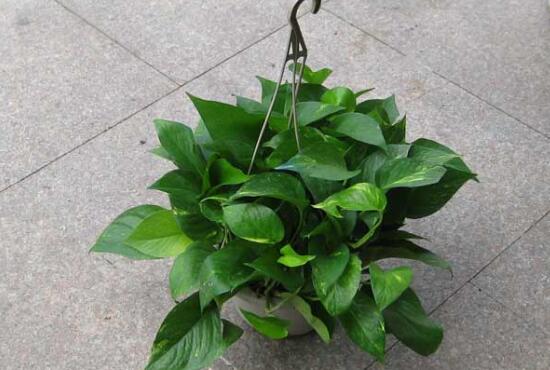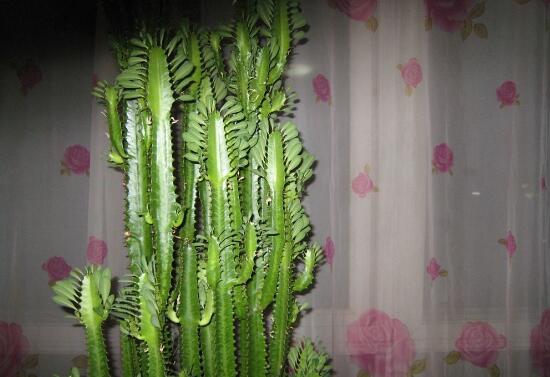How to do the cold splash insect, the pest control of the cold splash / 2 insect pests 2 diseases
When we breed cold splash, the last thing we want to encounter is the problem of diseases and insect pests, which do great harm to the plant, not only affect the ornamental, but also lead to the phenomenon of plant death. So what about the cold water worm? What do you need to do to prevent and control diseases and insect pests? Next, the editor will take you to learn about it.
First, what to do with the cold water worm? find the reason.

2. Pest control of cold splash (pest)
1. Root nematode
Root nematode is a hermaphroditic pest. If this pest grows on the cold water flower, it will cause the plant to grow slowly, the leaf color will gradually become abnormal, and even cause the plant to die early.
Control method: when dealing with root nematode, which is a cold pest, we can use 3% carbofuran to control the plant.
two。 Shell worm
Scale insect is a kind of pest that exists in many plants, and cold water is no exception. This pest mainly feeds on the sap of the plant and gradually absorbs it, which leads to the loss of nutrients and wilting of the plant.
Control methods: in the control of shell insects, we can use 1000 times of omethoate to spray diseased plants, usually once every 7-10 days, 2-3 times can completely eliminate this pest.
3. Pest control of cold splash (disease)
1. Leaf spot disease
Leaf spot is a relatively high incidence of cold splash diseases and insect pests, and its high incidence period is from August to September every year, so we should pay special attention at this time. Leaf spot disease mainly threatens the leaves of the plant, when the disease occurs, there will be many round disease spots on the leaves, which will gradually expand with the passage of time, and finally cause the leaves to fall off gradually.
Control method: in the prevention and control of leaf spot disease, we can use 38% cuproloxil 800-1000 times to spray the diseased plant, spray once every 5-7 days, 2-3 times can be cured.
two。 Root rot disease
Root rot is a disease caused by fungi, which will gradually weaken the function of cold water to absorb water and nutrients, and finally cause the plant to rot to death. The high incidence period of this disease is from March to May of each year, you can pay attention.
Prevention and treatment: in the prevention and treatment of root rot, we can use 1000 times of topzine to irrigate the root of cold water, generally once every 12-15 days, 1-2 times can be cured.
Cultivation and pest control of cold water flower also known as nettle nettle and snow grass. Urticaceae, cold water flower genus. Originated in Vietnam, mostly distributed in the tropics. Morphological characteristics: perennial evergreen herbs, plant height 15cm-40cm. Leaves opposite, elliptic, 4-8 cm long. The upper part of the leaf margin is sparsely obtusely serrated, and the lower part is often entire. The background color of the leaf is green, there are three longitudinal stripes of the main vein, the vein part is slightly sunken. The main veins are mixed with silvery white markings, the stripes are slightly convex, and the leaves are green on the back. The common cultivated varieties are: dense cold water spray (P. C. cv. Nana): the branches and leaves are dense, and the plant is relatively short, less than 20 cm. The common cultivated species of the same genus are: wrinkled leaf cold spray: leaf cross-shaped opposite, leaf vein brownish red, leaf surface yellowish green, surface wrinkled, margin serrated, leaf vein tea-brown, leaf color and markings very similar to iron cross begonia. Bubble leaf cold spray: the plant is creeping and trailing, the branches are thin and many, and the whole plant is covered with short and fine villi. Leaves round, base cordate, thin, leaf margin semicircular serrated, interveined mesophyll raised. Silver leaf cold spray: stem erect, much branched. The petiole is short, the leaf is ovate-lanceolate, dark green, obtusely serrated, and there is a beautiful silver-white strip in the middle of the leaf, from the leaf base to the top. Habits: like warm, moist and semi-overcast environment, avoid direct sunlight, have strong negative tolerance. It is resistant to both fertilizer and barren, and likes to be born in loam soil rich in organic matter. Not resistant to drought, has a certain cold tolerance, can withstand short-term low temperature of 5 ℃. Cultivation management: cold water is not strict to the soil, ordinary garden soil and sand can be used as cultivation soil. In order to make the plant grow vigorously and the branches and leaves are thick green, 5 parts of rotten leaf soil or peat soil, 3 parts of perlite and 2 parts of river sand can be mixed with a small amount of base fertilizer and preserved in warm and humid climate. During the growth period, pay attention to timely watering, keep the basin soil moist, increase the watering times in hot summer, can be watered once a day, maintain moderate humidity of the basin soil, and often water the leaf surface and the ground to maintain sufficient air humidity. Reduce the number of watering in autumn and winter, otherwise black spots may appear on the leaves. Watering should grasp the principle of "dry and wet" and avoid stagnant water. In the growing season, rarefied liquid fertilizer can be irrigated once every 3 weeks, but nitrogen fertilizer should not be applied. Granular fertilizer can also be used, but do not let the fertilizer touch the foliar surface, it is best to sprinkle the foliar surface with water after fertilization to wash away the fertilizer that accidentally fell into the foliar surface. Summer should be kept in the shade to avoid strong direct light. But if the light is too dark, the color of the leaves will fade. In the sparse shade environment, the leaves are clear white and green, the internodes are short and compact, and the leaves are bright and shiny. In all environments, the internodes are often overgrown, the stems are soft, lodging easily, and the plant shape is loose. In order to enhance the pot ornamental effect of cold splash, the growing period should be pruned regularly to promote its branching and maintain full plant shape. If you want to dwarf the plant, you can prune it properly or pick the heart for 2 or 3 times. Be careful not to prune too much, otherwise it will easily lead to many and small leaves, affecting the aesthetics. When the plant grows to about 40 cm, the stem begins to lodge outward. It should be cut short in time to promote the sprouting of the lower axillary buds and make the branches dense and compact. It can also be planted with 3 or 5 plants, full of green. The suitable temperature for cold water spray growth is 18-22 ℃, and the overwintering temperature should not be lower than 7 ℃. Plant growth is very fast, it is appropriate to change the basin in April every year, the basin should be slightly larger, but slightly shallow, good drainage. Potted plants should be renewed every 2 ~ 3 years. Culture: generally use cuttage culture, can also be used ramet culture. 1. Cutting can be carried out in both spring and summer. It is not suitable for cutting in high temperature season in summer, but it grows slowly in winter. Select the growing and full branches, cut the stem tip 5cm long as cuttings, retain a few leaves at the end, and insert them directly into the sand bed with vermiculite or plain sand as the matrix, or cut into the basin soil mixed with peat and soil, the depth should not exceed 2 cm. Put it in a semi-shade place, keep the soil temperature at 18-20 ℃, spray water with a spray can when it is dry, take root in about 2-3 weeks, and transplant or basin after 1-2 months. 2. Ramet culture: the clump of cold water is very strong, so the whole pile can be divided into several parts and put on the basin respectively. At the same time, the old stem is cut short, and the basal 2-3 nodes of the stem are preserved. After survival, the axillary buds can germinate quickly and produce new lateral branches. Diseases and insect pests: diseases such as shell insects and aphids are easy to occur in summer high temperature season, which should be scraped or washed with soapy water in time, and can be sprayed and controlled in serious cases. In addition, poor management, there will be leaf spot disease, should be timely prevention and control. Prevention and control of main diseases and insect pests of cold spray
The common pest is the beetle, and there are few diseases.
Prevention and control methods:
① catches adults on flowers in the morning or evening and kills them centrally.
② is sprayed with 20% chlorpromazine emulsion 3000 times.
- Prev

What to do when the green orchid grows, the pest control of the green orchid / 2 insects and 3 diseases
As a kind of ornamental and drug-taking plant, green orchid is kept at home by many flower friends. However, there are many people and novices, and many of them are not raised in accordance with the breeding methods of green orchids, which often make the plant worms sick, thus affecting the ornamental quality. What if the green orchid grows into a worm?
- Next

What to do when the dragon flower grows insects? The pest control of dragon flower/4 pests 2 diseases
As a good-looking and effective plant, keel flower is very popular, keep it indoors, not only beautify the room, but also purify the air. However, indoor farming is not better than outdoor farming. Because of environmental factors, it is often invaded by pests. What should I do if the dragon bone flower grows insects?
Related
- Fuxing push coffee new agricultural production and marketing class: lack of small-scale processing plants
- Jujube rice field leisure farm deep ploughing Yilan for five years to create a space for organic food and play
- Nongyu Farm-A trial of organic papaya for brave women with advanced technology
- Four points for attention in the prevention and control of diseases and insect pests of edible fungi
- How to add nutrient solution to Edible Fungi
- Is there any good way to control edible fungus mites?
- Open Inoculation Technology of Edible Fungi
- Is there any clever way to use fertilizer for edible fungus in winter?
- What agents are used to kill the pathogens of edible fungi in the mushroom shed?
- Rapid drying of Edible Fungi

